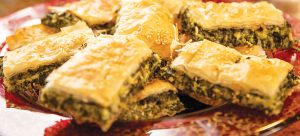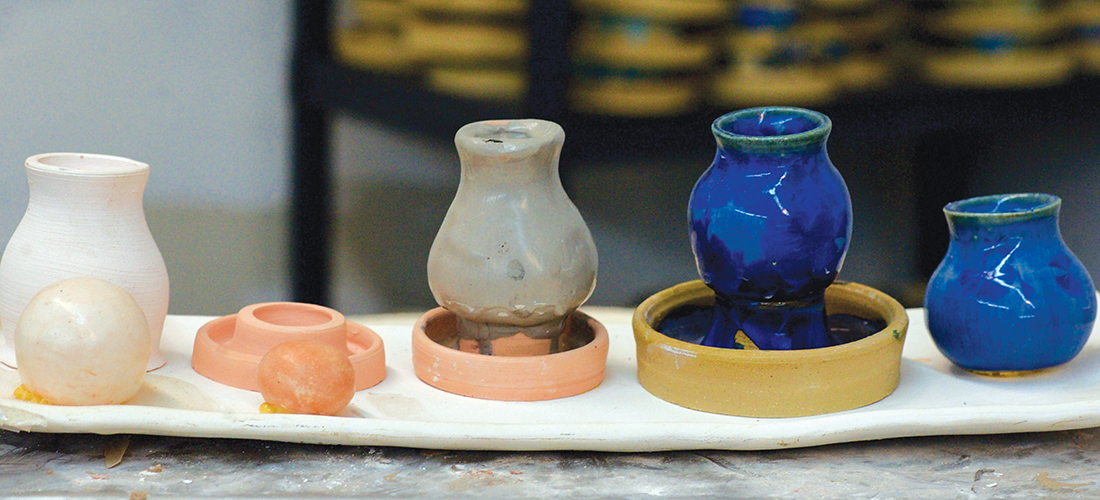
Celtic Pottery’s painstaking art of crystalline pottery
By Maria Johnson • Photographs by Sam Froelich
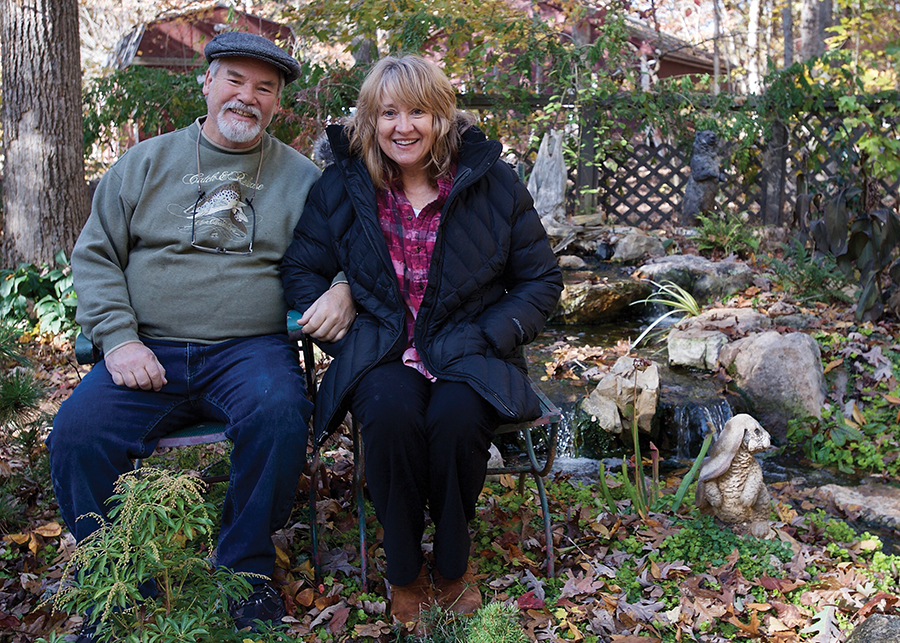
Mixing everyday elements to create something new and beautiful — that’s the juice that keeps artists going.
It also could be the theme of Janet Gaddy and Tim Moran’s life together.
In pottery circles, the Browns Summit couple are known as accomplished “crystaleers,” people who finish their pieces with crystalline glazes, shimmering topcoats that blossom with frosty crystals after being fired in super hot kilns.
“This isn’t for the faint of heart,” says Tim, explaining that only one in three pieces survives the process. “There are very few potters who do crystalline — and very few who do it well.”
The couple’s skill with the painstaking craft — and the vividness of their crystals — have landed their pieces in galleries in Raleigh, Wilmington and Black Mountain. More than a third of their business comes from custom orders.
They also pack a trailer and roll off to more than a dozen shows every year.
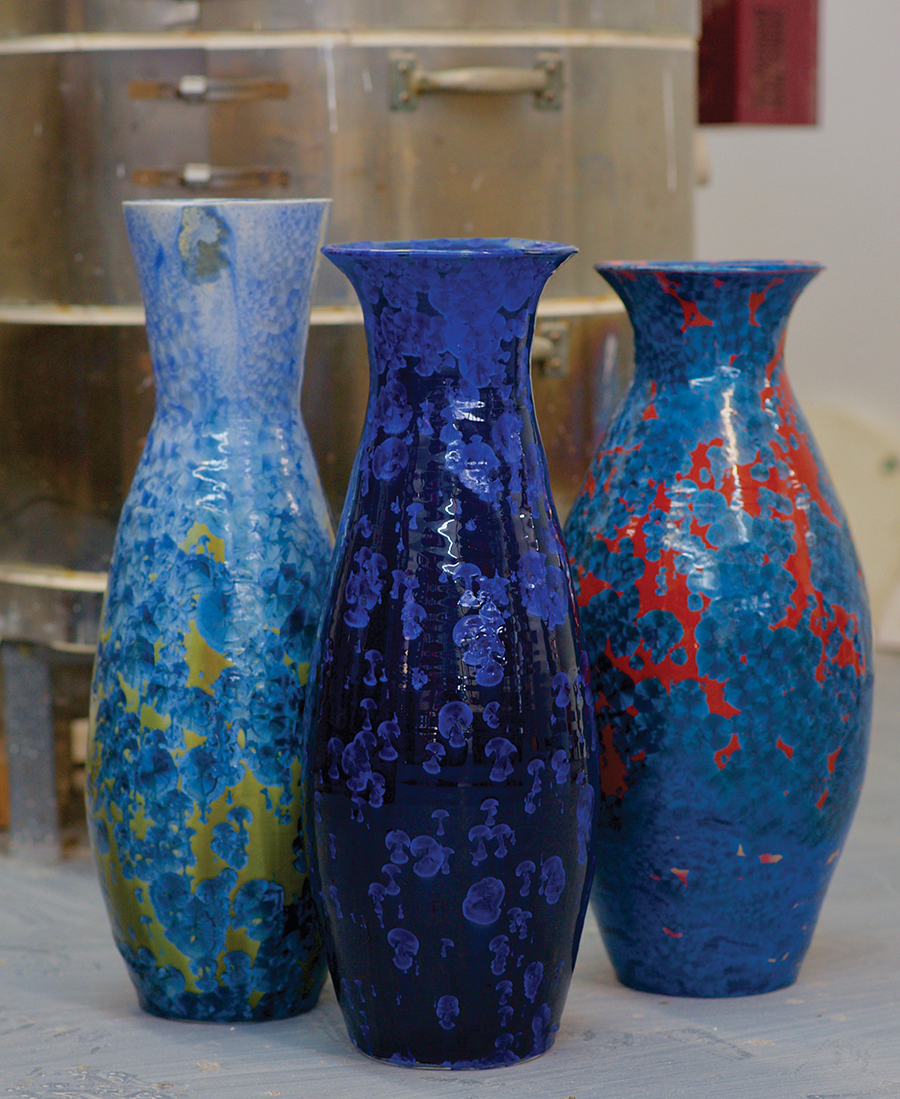
They’re regulars at the Carolina Pottery Festival, which happens every November in Shelby, N.C., and at the selective Catawba Valley Pottery & Antique Festival in Hickory in March.
“To be in that show is an absolute honor,” Tim says of the Catawba event. “It’s one of those shows you dream about.”
Locally, the pair can be found hovering around their booth at Potters of the Piedmont, a spring and fall show at the Leonard Recreation Center in Greensboro. They keep a few pieces in the gift shop at the Greensboro History Museum downtown.
The rest of their time is spent making the earthen pieces that are literally — because of the capricious nature of crystals — one-of-a-kind works.
“Mother Nature has a lot to do with it,” Tim explains. “When she smiles on you, it’ll send a chill up your spine.”
That’s how he and Janet felt when they met. Tim, who’d just sold a chain of small radio stations, was in the throes of a divorce, the final act of a 28-year union.
Janet, a potter and high school art teacher, was stinging from the dissolution of her 20-year marriage.
Both were wounded and wary when they crossed paths in a weeklong life-coaching workshop in Chapel Hill in 2001. They got to know each other during sessions that required them to divulge their histories and feelings. They had dinner together. At the urging of her counselor, Janet made an announcement to the class at the end of the week.
Tim was the one she’d spend the rest of her life with, she said.
For once, he was speechless.
They hugged.
“I whispered ‘Thank God’ in her ear. I’d prayed about it,” he remembers.
They forged a life together. At first, that involved him driving from Roanoke Rapids, N.C., to Danville, Virginia, Janet’s hometown, to take a pottery class with her. It was a blatant excuse to be together.
“I told him I’d seen kindergarteners who made better pottery,” she says.
Tim cups his hands around an imaginary vessel then splays his fingers wide to mimic throwing a piece of pottery hastily.
“I’d be like, ‘OK — let’s go to dinner,’ “ he says.
Pottery assumed a bigger role after Tim had triple-bypass heart surgery, the byproduct of years of stressful living, he believes.
“He traded a three-piece suit for a potter’s wheel,” Janet says.
“Pottery became my therapy, my obsession,” adds Tim, who now favors denim and flannel. “Anything I do, I do 110 percent.”
For years, Tim had collected art glass, a passion that sent him on frequent trips to glass-blowing centers of the Czech Republic, Austria, Hungary and Poland.
He bought hundreds of museum-quality pieces from the Art Nouveau period of the late 1800s and early 1900s.
As much as he appreciated art, he found there was a difference between collecting and creating.
“I enjoyed taking a lump of dirt and making something beautiful,” he says.
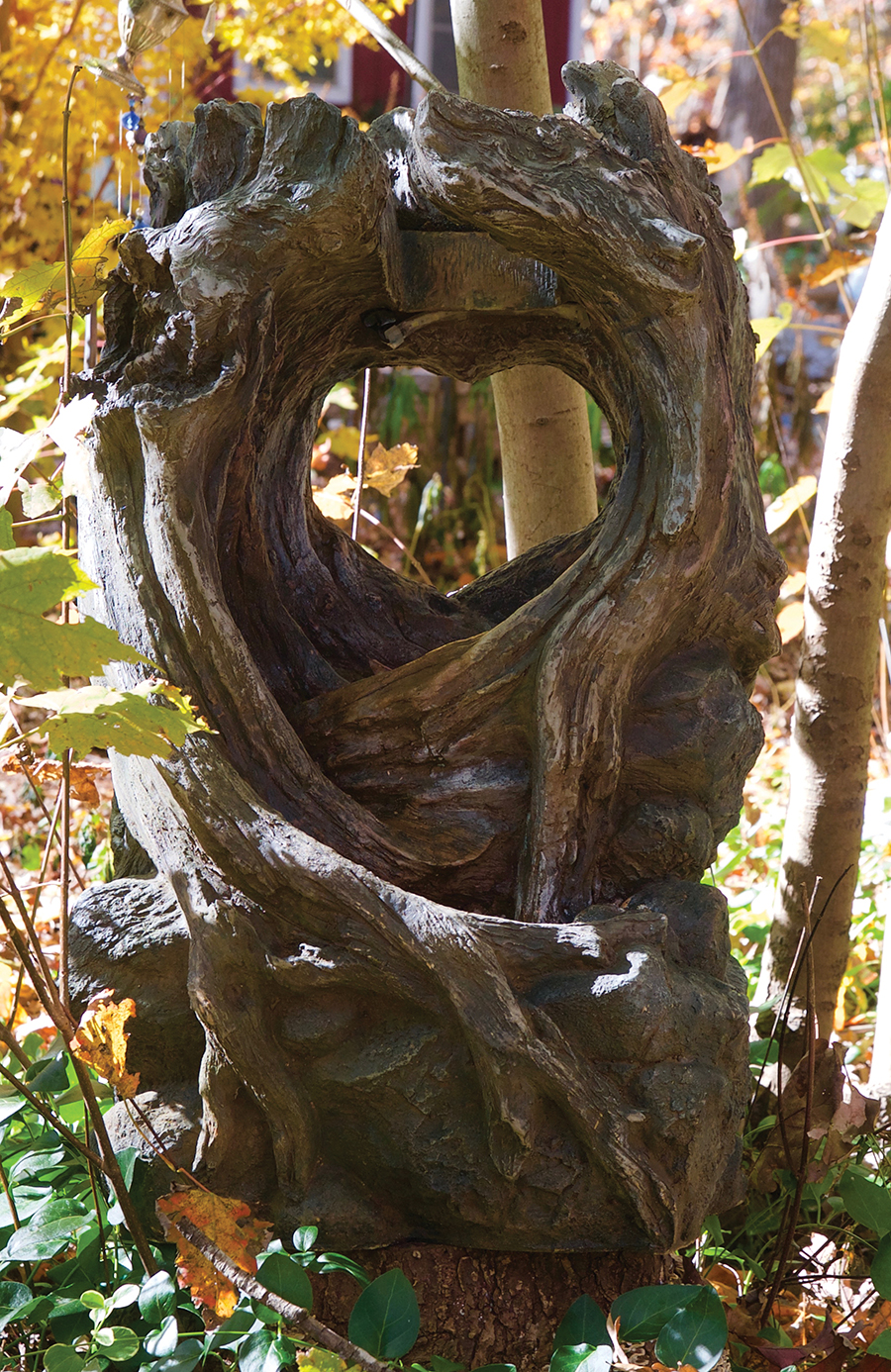
Janet, who’d inherited a hobby kiln from her father, had long known the satisfaction of creating. She studied pottery and sculpture in Cortona, Italy, in 2006, the same year she started teaching art at Greensboro College.
“She’s truly the artist,” says Tim.
Pottery became their thing, a common pursuit and a way to learn and grow together.
In 2004, they took a master potter’s class at Rockingham Community College in Wentworth. The class took a stab at crystalline glazes, a finish that had been around since the ninth century, when it appeared as a mistake in Chinese pottery.
The glaze was revived and refined by a 20th-century English potter named Peter Ilsley.
In North Carolina, which is recognized internationally as a pottery hub, only a few people had reputations for crystalline glazes, among them Phil Morgan and Al McCanless in Seagrove and Sid Oakley in Creedmoor.
The class members in Wentworth didn’t have much luck with the finicky glaze.
Tim, who holds a degree in geochemistry from the University of Georgia, was upset at the group’s failure. He was determined to make the glaze work.
He noodled with the formula — zinc and titanium form the crystals while cobalt, copper, iron and manganese provide the colors — until he fired a few successes. His mentor at RCC, Sally Hayes, encouraged him.
“She said, ‘You need to be showing,’” he says, pausing to wipe away tears. Hayes recently died, and Tim has just returned from the Carolina Pottery Festival, which was the first festival he attended with Hayes. She invited him to tag along and bring a few pieces to sell.
“I sold everything,” he says. “I said, ‘This is pretty cool.’”
He and Janet have concentrated on crystalline glazes ever since.
Their studio is a former three-car garage behind their home in the woods.
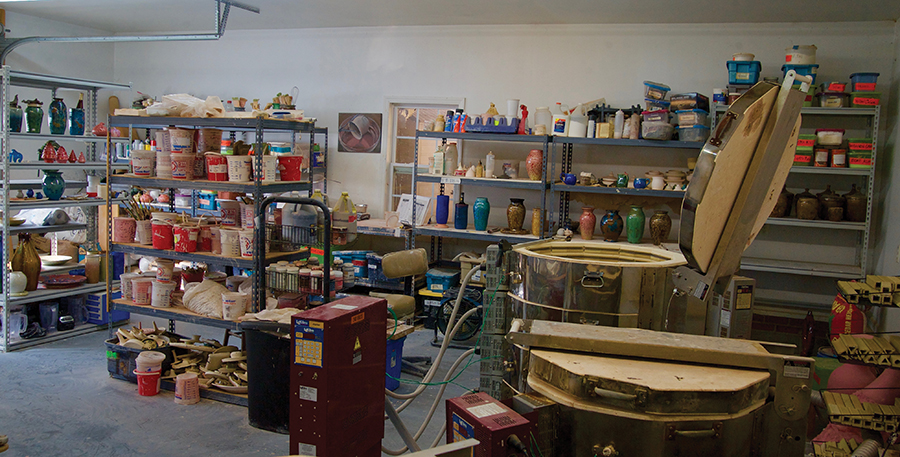
No longer an art teacher, Janet works daily with Tim on the couple’s business, Celtic Pottery, a name that reflects her Scottish heritage and his Irish roots.
Each of them makes their own pottery — his are more functional pieces such as platters, vases and bowls, and hers are more figurative, incorporating animal and human forms. Currently, she’s selling the heck out of sea turtles that gleam with mottled crystalline glazes.
Often, she mounts them on pieces of driftwood that washed ashore at Kerr Lake or the Outer Banks.
“We like to use things from North Carolina and Virginia, since that’s where most of our shows are,” says Tim.
They mold their works from clay that’s custom made for them by STARworks Center in Star, N.C. The blend combines porcelain and stoneware clays. The soft porcelain clay, used to make fine china, is hard to handle, but it’s extremely durable when fired. It also makes a smooth surface required for the formation of crystals.
“It’s like throwing cream cheese,” Tim says.
After the first firing, their pieces come out of the kiln as bisque, ready to receive the liquid glazes that distinguish the couple’s work. They use a kitchen blender to whirl cocktails of water, powdered chemicals and additives that affect the hardness and shine.
“We’ve gone through several blenders,” Tim says.
Some recipes yield large fan-shaped crystals that resemble the leaves of gingko trees.
Some produce small crystals that interlock like frost on a windshield.
Others crystals arrange themselves in a lattice of shamrocks.
“Our stuff is functional, but there’s a sort of elegance, and people are attracted to that,” Tim says.
Like chefs perfecting new dishes, the duo make detailed notes on every glaze and its complex firing schedule, which can start at between 2,300 and 2,400 degrees Fahrenheit, then dip and rise, at various temperatures, for more than 16 hours.
They use four electric kilns with computerized controls. Because of the energy demand, Duke Power installed a transformer outside the studio just for them.
“They knew they were gonna get their money back,” says Tim.
Once out of the kiln, the pieces must cool under controlled conditions for another 15 hours. Cracks and blowouts are common. Tim lifts a large vase to reveal a jagged hole in the bottom.
“You can’t guarantee anything,” he says.
Their misses are many, but their hits are spectacular.
Multicolored award ribbons cover the bulletin boards in their studio.
A show poster on the wall features several of their red pieces. Red is a difficult color for potters to attain. The pigment burns out easily at high temperatures, and the glaze contains cadmium, which is lead and must be applied in an encapsulated stain before bisque firing.
The two enjoy pushing themselves to learn new formulas and techniques.
They recently returned from a class in Dunedin, Florida, with renowned crystalline potter Ginny Conrow.
“I’m 72, but I’m going to be a student for the rest of my life,” says Tim.
“We work on glazes every day,” says Janet. OH
Celtic Pottery will display work at the Appalachian Potters Market in Marion on December 7. Their work also is part of a crystalline pottery exhibit and sale at the North Carolina Pottery Center in Seagrove until December 14.



